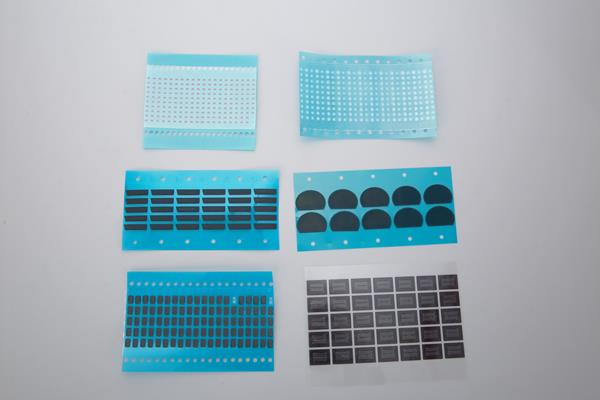Guide: With the rapid development of digital products, the application of mesh die cutting is also increasing. Today, everyone will enter the mesh.

Basic elements of mesh
1 mesh
The mesh number is a unit indicating the density of the mesh weaving (the amount of mesh contained between the meshes having a length of 1 inch)
2 wire diameter
The diameter of the wire is the thickness of the wire. As shown in the figure as TD
3 thickness
The thickness is the thickness value (measured value) when the mesh is in tension and is in a static state, and is shown as MT in the figure.
4 opening
Opening is a method used to indicate the size of the holes between the meshes. The opening is determined by the thickness of the wire and the mesh.
5 opening ratio
The open area ratio refers to the area occupied by the gap in the unit area expressed by the percentage of the mesh. The larger the percentage, the larger the opening ratio of the mesh.
6 acoustic resistance rate
Sound resistance rate = sound pressure / particle speed. It is the most important parameter related to sound. The smaller the value, the smaller the barrier to sound.
Product material classification
Polyester PET
Features: low shrinkage, high strength, acid aging and environmental protection
Self-absorbent
The aperture does not change after encountering water
Acoustic performance and stability
Nylon PA
Features: high elongation
Water absorption
The hole diameter changes after water contact, resulting in a change in the acoustic resistance rate.
Unstable acoustic performance
Product use classification
Air filter features:
Precise and consistent mesh size
Smooth surface
Precise filtration performance
Dust rating: IP5X
Lighter and thinner
use:
Mainly used in computer, audio, mobile phones and various speakers to protect against dust.
Excellent dust resistance, good ventilation, minimal transmission loss, stable product performance, and maximum customer satisfaction
Acoustic Mesh Acoustic Network Features:
Stable sound output
Meet all kinds of sound effects
Has been applied to mature products of various brands of mobile phones and headphones
use:
Mainly used in the speakers of mobile phones, headphones, audio and other electronic products.
The stable acoustic resistance value guarantees the sound quality of the product and optimizes the sound quality.
Waterproof Mesh Waterproof Net Features:
Waterproof treatment
Waterproof rating: IPX4
Environmentally friendly dyes and waterproof treatment
Third-party environmental test report for all products
use:
Mainly used in outdoor small speakers, microphones, computers and mobile phones and other electronic products.
Aluminium Mesh Silver Network
Light and flexible
anti-static
Anti-electromagnetic or radio frequency interference
Meet metal appearance needs
Production Process
Warping
The raw materials are finished by a warping machine onto a shaft.
2. Wear a comprehensive wear
Pass each wire through the heald and steel heel.
3. Weaving
Start the textile process → mesh forming
4. Inspection
Dimensions, density, appearance, and weaving of the woven mesh
Physical inspection.
5. Cleaning
For the thread and the oil on the mesh belt during the manufacturing process,
Dirty washing process.
6. Dyeing
The mesh color processing process is carried out according to the customer's needs.
7. Heat setting
Use a heat setting machine to stabilize the physical properties of the mesh.
8. Inspection
Detect mesh number, wire diameter, mesh size, thickness, and so on.
9. Packaging
Uniform use of paper tubes with a diameter of 7.5 cm rolled up, and then plastic
Bag packaging.
test
Mesh mesh
Thread Diameter wire diameter
Opening
Air Permitability
Mesh count
The introduction of this year's mesh die cutting is here, I want to know more, you can call us!
Related News
- The usability of high viscosity protective film die-cutting
- The structure classification of common die-cutting products has these
- Protective film die-cutting process often encountered problems how to solve the problem
- Viscosity problem of heat conduction double-sided adhesive die Cutting
- Application of double-sided adhesive die-cutting in die-cutting
- Thermal material die-cutting actually has such a role
- Classification of die-cutting products in Chinamo cutting plant
- Pay attention to these contents in die-cutting machining process
- What is the "favorites required" detail about the die-cutting project workflow?
- How to calculate the cost of die-cutting processing
- Introduction of three types of die-cut materials commonly used in die-cutting processing plants
- Promote the rapid improvement of die-cut products of conductive shielding materials in the 5G era
- Mobile phone protective film die cutting process control
- Mobile phone protective film die-cutting process




